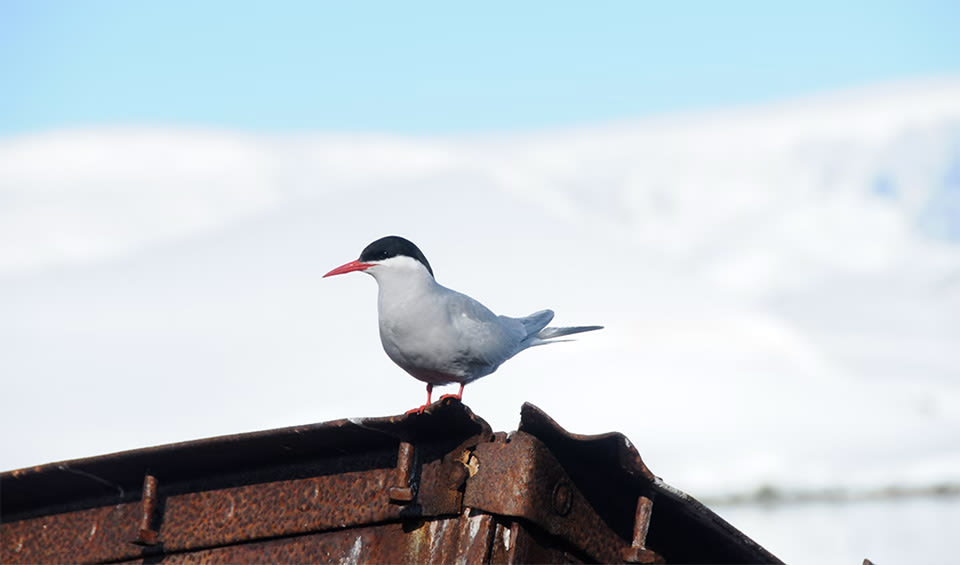A medium-sized seabird renowned for its remarkable migratory journey, it undertakes an extraordinary odyssey between its breeding grounds in the high Arctic and its wintering habitats in Antarctica. This epic migration spans thousands of miles, making it one of the most impressive feats of avian navigation in the animal kingdom.
During its annual migration, the Arctic tern traverses vast distances, navigating across continents and oceans to reach its destination. This incredible journey allows the bird to capitalize on optimal breeding and wintering conditions in different hemispheres, ensuring access to abundant food resources and favorable environmental conditions throughout the year.
In preparation for its arduous migration, the Arctic tern must fuel up on a substantial amount of food to sustain its energy levels during the long journey. To accomplish this, the bird often makes a crucial stopover in the nutrient-rich waters of the North Atlantic Ocean, where it spends several weeks feasting on fish and crustaceans to replenish its reserves before continuing its migration southward.
Breeding colonies of Arctic terns can be found clustered along coastlines, where they establish nests on various substrates such as shingle beaches, gravel ridges, and lichen-covered rocks. These colonies provide essential breeding habitat for the terns, offering protection from predators and access to suitable nesting sites.
Distribution
 Algeria
Algeria Angola
Angola Antarctica
Antarctica Argentina
Argentina Australia
Australia Austria
Austria Belarus
Belarus Belgium
Belgium Benin
Benin Bermuda
Bermuda Bolivia
Bolivia Bouvet Island
Bouvet Island Brazil
Brazil British Indian T.
British Indian T. Bulgaria
Bulgaria Cameroon
Cameroon Canada
Canada Cape Verde
Cape Verde Central Af. Rep.
Central Af. Rep. Chile
Chile Colombia
Colombia Congo-Brazzaville
Congo-Brazzaville Costa Rica
Costa Rica Croatia
Croatia Cuba
Cuba Cyprus
Cyprus Czechia
Czechia Côte D’ivoire
Côte D’ivoire DR Congo (Kinshasa)
DR Congo (Kinshasa) Denmark
Denmark Ecuador
Ecuador Egypt
Egypt Equatorial Guinea
Equatorial Guinea Estonia
Estonia Falkland Islands
Falkland Islands Faroe Islands
Faroe Islands Finland
Finland France
France French Southern T.
French Southern T. Gabon
Gabon Gambia
Gambia Germany
Germany Ghana
Ghana Gibraltar
Gibraltar Greece
Greece Greenland
Greenland Guadeloupe
Guadeloupe Guatemala
Guatemala Guinea-Bissau
Guinea-Bissau Guinea
Guinea Heard & McDonald
Heard & McDonald Hungary
Hungary Iceland
Iceland India
India Indonesia
Indonesia Ireland
Ireland Israel
Israel Italy
Italy Japan
Japan Jordan
Jordan Kuwait
Kuwait Latvia
Latvia Lesotho
Lesotho Liberia
Liberia Libya
Libya Lithuania
Lithuania Luxembourg
Luxembourg Marshall Islands
Marshall Islands Mauritania
Mauritania Mexico
Mexico Montenegro
Montenegro Morocco
Morocco Mozambique
Mozambique Namibia
Namibia Netherlands
Netherlands New Zealand
New Zealand Nigeria
Nigeria Norway
Norway Oman
Oman Panama
Panama Paraguay
Paraguay Peru
Peru Poland
Poland Portugal
Portugal Puerto Rico
Puerto Rico Russia
Russia Saint Helena
Saint Helena Saint Pierre
Saint Pierre Senegal
Senegal Serbia
Serbia Sierra Leone
Sierra Leone Slovakia
Slovakia Somalia
Somalia South Africa
South Africa South Georgia
South Georgia Spain
Spain Sudan
Sudan Svalbard
Svalbard Sweden
Sweden Switzerland
Switzerland Togo
Togo Turkey
Turkey UAE
UAE US Virgin Islands
US Virgin Islands Ukraine
Ukraine United Kingdom
United Kingdom United States
United States Uruguay
UruguayAnything we've missed?
Help us improve this page by suggesting edits. Glory never dies!
Suggest an editGet to know me
Terrestrial / Aquatic
Altricial / Precocial
Polygamous / Monogamous
Dimorphic (size) / Monomorphic
Active: Diurnal / Nocturnal
Social behavior: Solitary / Pack / Herd
Diet: Carnivore / Herbivore / Omnivore / Piscivorous / Insectivore
Migratory: Yes / No
Domesticated: Yes / No
Dangerous: Yes / No





